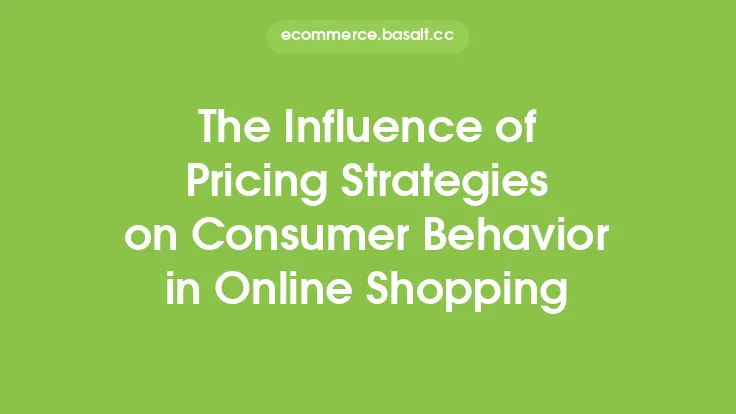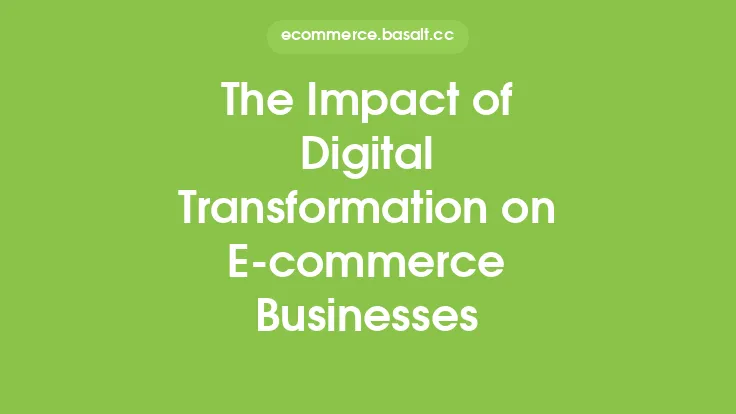The rise of e-commerce has led to a significant shift in the way consumers shop, with online shopping becoming an integral part of daily life. As a result, businesses are constantly looking for ways to enhance the online shopping experience, making it more engaging, personalized, and convenient for customers. One key aspect that has gained significant attention in recent years is personalization. Personalization refers to the process of tailoring the online shopping experience to individual customers' preferences, behaviors, and interests. This can be achieved through various techniques, including data analysis, customer profiling, and content recommendation.
Introduction to Personalization
Personalization is not a new concept in the retail industry. Traditional brick-and-mortar stores have long used personalization techniques, such as sales associates offering personalized recommendations and loyalty programs, to build customer loyalty and drive sales. However, with the rise of e-commerce, personalization has become more complex and sophisticated. Online retailers can now use advanced technologies, such as machine learning algorithms and data analytics, to collect and analyze customer data, creating a more personalized and relevant shopping experience.
Benefits of Personalization
Personalization has numerous benefits for both customers and businesses. For customers, personalization provides a more relevant and engaging shopping experience, making it easier to find products that meet their needs and interests. Personalization also helps to build trust and loyalty, as customers feel that the business understands and values their individual preferences. For businesses, personalization can lead to increased sales, customer retention, and brand loyalty. Personalization can also help businesses to differentiate themselves from competitors, creating a unique and memorable shopping experience that sets them apart from others.
Types of Personalization
There are several types of personalization that businesses can use to enhance the online shopping experience. These include:
- Content personalization: This involves tailoring the content of a website or email to individual customers' interests and preferences. For example, a customer who has previously purchased outdoor gear may be shown recommendations for similar products or content related to outdoor activities.
- Product personalization: This involves recommending products that are relevant to individual customers' preferences and behaviors. For example, a customer who has previously purchased a certain brand of clothing may be shown recommendations for similar products from the same brand.
- Email personalization: This involves tailoring email content to individual customers' preferences and behaviors. For example, a customer who has abandoned their shopping cart may receive a personalized email reminder to complete their purchase.
- Recommendation engines: These are algorithms that analyze customer data and behavior to provide personalized product recommendations. For example, a customer who has purchased a certain product may be shown recommendations for complementary products.
Implementing Personalization
Implementing personalization requires a combination of technology, data, and strategy. Businesses need to collect and analyze customer data, such as browsing history, purchase behavior, and demographic information, to create detailed customer profiles. They also need to use advanced technologies, such as machine learning algorithms and data analytics, to analyze customer data and provide personalized recommendations. Additionally, businesses need to develop a clear strategy for personalization, including defining goals, identifying target audiences, and measuring the effectiveness of personalization efforts.
Challenges and Limitations
While personalization can have numerous benefits, there are also challenges and limitations to consider. One of the main challenges is collecting and analyzing customer data, which can be time-consuming and resource-intensive. Additionally, businesses need to ensure that they are using customer data in a way that is transparent and respectful of customer privacy. Another challenge is balancing personalization with the need for a seamless and efficient shopping experience. Too much personalization can be overwhelming or annoying, while too little personalization can make the shopping experience feel generic and unengaging.
Best Practices
To get the most out of personalization, businesses should follow best practices, such as:
- Collecting and analyzing customer data: This involves using advanced technologies, such as data analytics and machine learning algorithms, to collect and analyze customer data.
- Defining clear goals and objectives: This involves identifying what businesses want to achieve through personalization, such as increasing sales or improving customer engagement.
- Using personalization strategically: This involves using personalization in a way that is targeted and relevant, rather than overwhelming or annoying.
- Measuring and evaluating effectiveness: This involves using metrics, such as click-through rates and conversion rates, to measure the effectiveness of personalization efforts and make adjustments as needed.
Future of Personalization
The future of personalization is likely to be shaped by advances in technology, such as artificial intelligence and machine learning. These technologies will enable businesses to collect and analyze even more detailed and nuanced customer data, creating a more personalized and relevant shopping experience. Additionally, the rise of emerging technologies, such as voice commerce and augmented reality, will create new opportunities for personalization, such as voice-activated product recommendations and virtual try-on experiences.
Conclusion
Personalization is a key aspect of the online shopping experience, providing a more relevant and engaging experience for customers. By using advanced technologies, such as data analytics and machine learning algorithms, businesses can collect and analyze customer data, creating detailed customer profiles and providing personalized recommendations. While there are challenges and limitations to consider, the benefits of personalization make it a crucial strategy for businesses looking to drive sales, customer retention, and brand loyalty. As technology continues to evolve, the future of personalization is likely to be shaped by advances in areas such as artificial intelligence, voice commerce, and augmented reality, creating new opportunities for businesses to enhance the online shopping experience.





